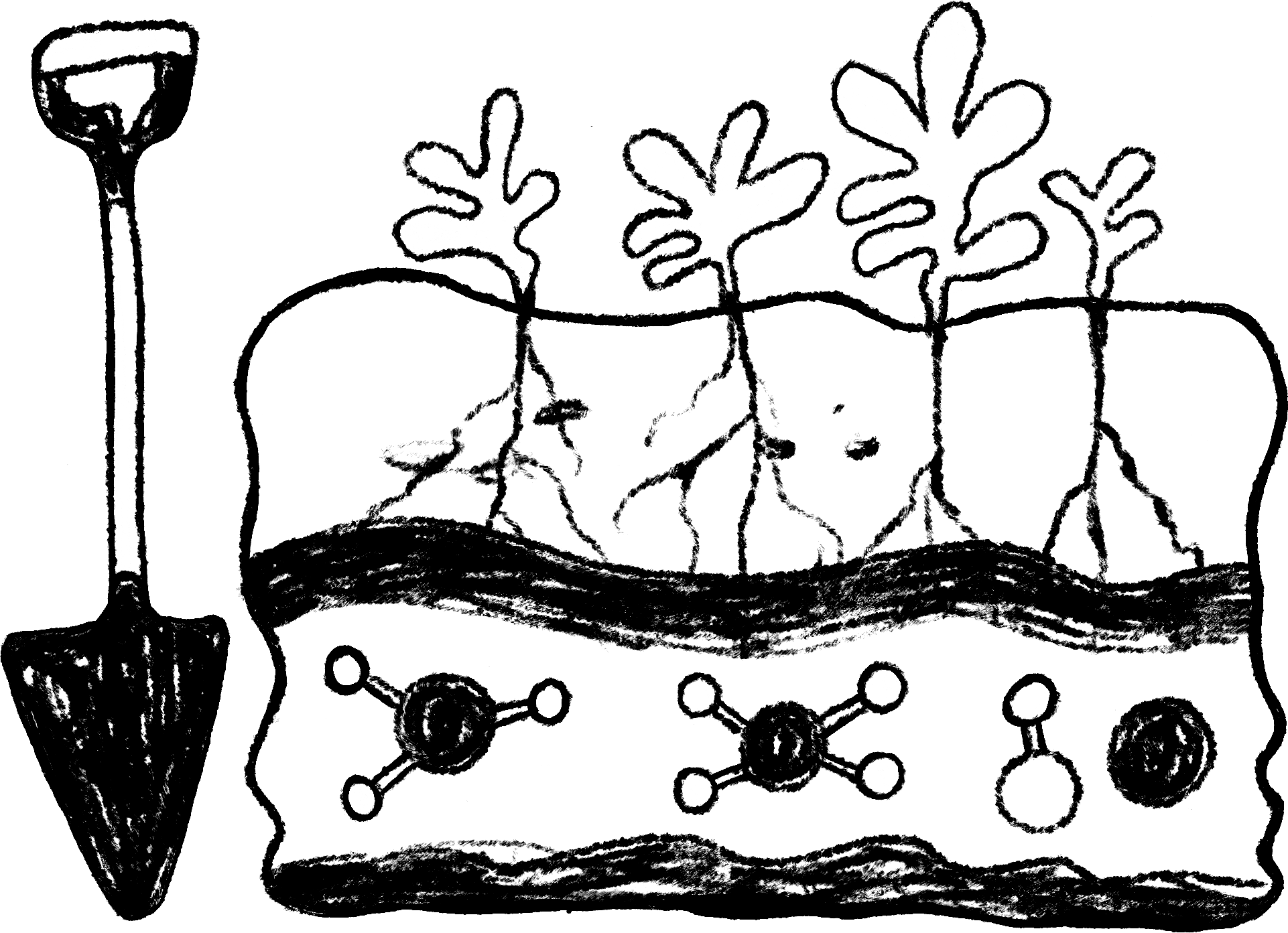Soil is the basis for farming. A healthy soil system will produce crops sustainably for years and years. Learn about soil texture, nutrients, microbes and stability in this unit.

Soil and sustainability
Phenomenon
The Dust Bowl was a tragedy of the 1930s and resulted in many federal government programs to address the issue of drought and soil erosion.
Files
Soil texture
What is soil texture? How is it determined? What geologic history contributed to soil texture?
What do students do? Students measure soil texture qualitatively and quantitatively.
What do students figure out? Differences in soils are due to organic matter content and particle size. Particle sizes can be felt and quantified. Geologic events led to the development of soil textures in different parts of the earth.
Files
Soil nutrient testing
Which nutrients are primary soil nutrients? How can soil nutrients be added to soil that needs them?
What do students do? Students test soil samples for nutrient and pH levels.
Students determine what amendments may need to be added and in what form.
What do students figure out? Nutrients can be found in soil that help plants to stay healthy and productive. Nutrients come from organic material that has decomposed (manure, compost) or synthetic fertilizer.
Files
Soil your undies
How healthy is your soil? What evidence can be used to support the claim of soil health?
What do students do? Students bury cotton briefs in soil, then dig them up later to see the effect of microbes in the soil.
What do students figure out? Microbes use the cotton as a food source. Soil microbes are present and active in soil.
Files
Soil stability test
How do soils differ in stability? What helps soil to be stable?
What do students do? Students observe the interaction between different soil samples and water.
What do students figure out? Something in the soils is different. The interactions of soil microbes are helping to maintain the soil structure.
Files
Teacher background
Systems thinking is a way to describe ecosystems and various processes in agriculture and the environment. Systems thinking can be described as looking at the interconnected parts of a whole. Each part can be labeled as one of four aspects: inputs, things that are added to the system from outside the system; outputs, the things produced from the system; storages, the places where some of the inputs are incorporated, or stored for future use; and flows, the movement of the matter and energy between the parts. Each one of these aspects is usually balanced by another in order for the system to maintain equilibrium or to stay in balance.
Agriculture is such a system. In order to produce agricultural products (crops, livestock feed, livestock, fuel), there are inputs that must be used. These inputs include seeds, nutrients from fertilizers and animal waste in the form of manure, pesticides, water, the equipment to plant, as well as the fuel to power the equipment. Some of these are incorporated into the products, but some are not available to the product due to timing or other environmental factors such as rain or lack of rain, temperature, or plant development. These inputs then flow from one place to another within the agricultural system or leave the system before they can be utilized. Some of these inputs are stored within the particles of soil and therefore have a better chance to be used or become part of the product. Soil is a large storage area of the agriculture system.
Three particles that make up soil are sand, silt and clay. These sediments are weathered from surface rocks or eroded by water or wind and carried to other places. Soil has varying levels of porosity and permeability depending on the structure and texture, allowing it to help or hinder plant growth. The texture of the soil will determine how well it will hold water and nutrients. Soil stability or structure helps soil withstand erosion and allow for water infiltration.
The three main soil nutrients include Nitrogen, Phosphorus and Potassium. These are abbreviated as N, P, and K. Nitrogen helps to maximize the photosynthetic ability of the plant and increase yield potential. Phosphorus is important for flowering and root growth. Potassium is necessary to prevent water loss and aids in photosynthesis. The mineral content can also determine the ability of certain plants to grow. pH is another important quality in soils. It refers to the level of Hydrogen ions in the soil. Depending on the amount of Hydrogen ions, soil can be neutral, acidic or basic. Too much acidity or basicity can affect the plant’s ability to absorb nutrients from the soil.
The soil’s texture, structure, nutrients, pH and mineral content will be important for whatever plant is planted. Depending on the soil characteristics, growers may add amendments in the form of nutrients, pesticides, and water. Technology now allows for precise amounts of these inputs to be applied only where they are needed. Runoff from soil may contain nutrients that can cause water quality issues. It is important for farmers to follow the 4Rs of Nutrient Stewardship when applying fertilizers. (These issues are discussed in the Water Quality unit.)
Soil plays a crucial role in the system of agriculture. Biotic and abiotic factors determine which plants will grow and thrive. Farmers are learning more and more about sustainable practices that will help soil produce our food for generations to come.
Next Generation Science Standards
Science and Engineering Practices
- Constructing explanations and designing solutions
- Developing and using models
Disciplinary Core Ideas
- ESS 3-A Natural resources
- LS2B Cycle of matter and energy transfer in ecosystems
Cross Cutting Concepts
- Cause and effect
- Energy and matter
Join our email list
Sign up for the Nourish the Future mailing list: Be the first to hear about upcoming workshops and new curriculum and resources!




